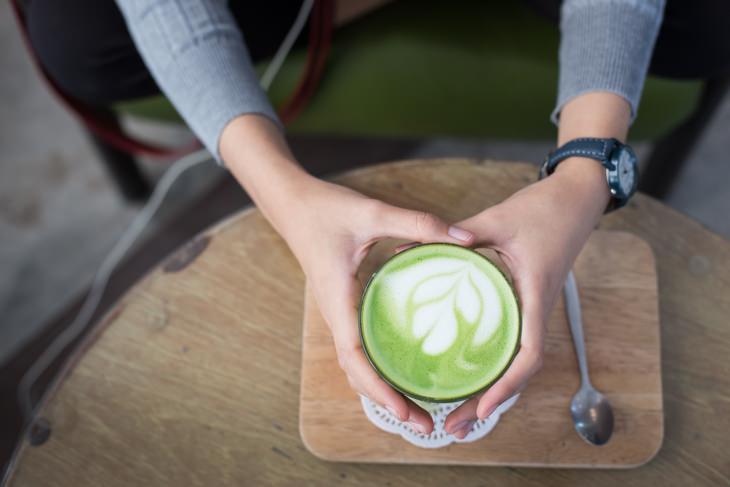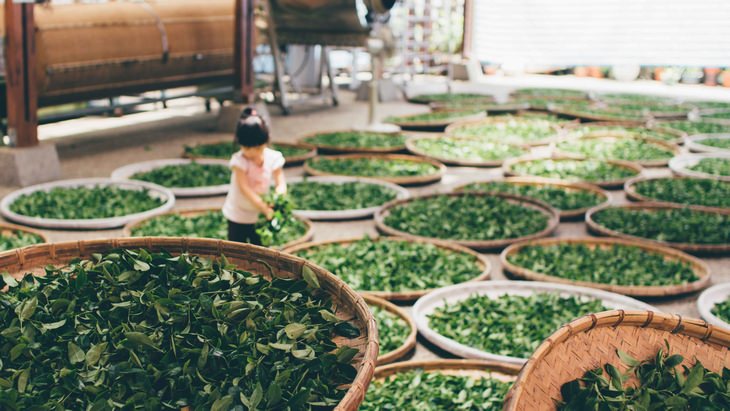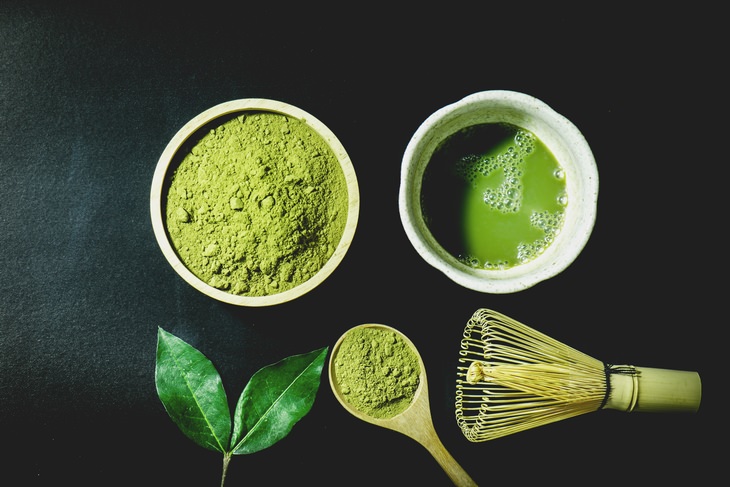


Although we have already written about the benefits of matcha tea in a previous article, it’s worth reminding you of the main ones:
Generally speaking, matcha is on the pricier side. Note, however, that you will use much less of it than other teas or coffee because it is very concentrated, so it’s well worth the high price tag. Matcha comes in two different varieties, or grades: culinary and ceremonial.
Culinary grade matcha is the affordable type and it is usually used in cooking, hence the name. However, many people favor it in drinks because of its more pronounced taste. Some of the better culinary options are practically indistinguishable from the ceremonial varieties, especially by a newbie. Look for keywords such as café, kitchen, classic, premium and ingredient grade to spot culinary matcha, and don’t be fooled, even culinary grade matcha should have a vibrant green color and pleasant aroma, so avoid yellow or brown notes and/or a strong bitter smell.
If you decide to buy a culinary grade product, my advice is not to aim for the cheapest variety and look for fresh, possibly certified matcha that lists Japan as its place of origin.
Perfect for: desserts and lattes
Price range: $5-15 per ounce
Ceremonial grade matcha is the crème de la crème of Japanese tea. The quality of this product is regulated in Japan, so we recommend buying ceremonial grade matcha that is certified. The powder should be smooth and bright green in color, and the smell should be a bit sweet and not very grassy. It should be sold in a tin container that is not transparent and sealed.
Perfect for: traditional tea and lattes
Price range: $20-30 per ounce
When choosing matcha, don’t forget to check the production date. The fresher it is, the healthier and tastier it will be because the anti-oxidants tend to degrade over time.
If we convinced you to give the matcha latte a go, check out this easy and versatile recipe and whisk away.

A bamboo matcha whisk (like the one on the picture above) or a handheld milk frother (as the one used in the video following the recipe) is imperative for making a matcha latte. Some articles suggest that it is possible to shake the matcha and water in a tightly-sealed thermos, but the results I got when using this method were disappointing: bitter clumps of matcha formed and rendered my drink terrible. And besides, both the whisk and the milk frother are inexpensive and easy to find in stores or online.
To make 1 serving of matcha latte, you will need:
Ingredients
Preparation
To prepare our matcha latte, first, measure out 1 tsp. of matcha powder and place it into a heatproof cup. If you’re using culinary-grade matcha, it can be stronger, so I recommend adding a bit less the first time you make it and then adjusting the correct amount to your liking.
Take your handy bamboo whisk or milk frother and whisk in about 2 tablespoons of hot water until no lumps remain. Use fast zigzag motions to dissolve the clumps that may form and fluff up the mixture. DO NOT use boiling hot water because that will make your matcha bitter.
Now you can add the milk, and at this point, you have 2 options depending on how fluffy you prefer your lattes:
1. For just a little cloud of foam on top, slowly add the milk while constantly whisking to fluff up the milk.
2. If you like your latte extra foamy, however, you will need a milk frother, which you will use to foam up the milk before adding it to the matcha mixture.
Sweeten your photo-worthy latte with sugar, honey, agave syrup or any sweetener of your choice (or skip it) and enjoy!
Already know you love matcha? Read our article with more matcha recipe ideas.